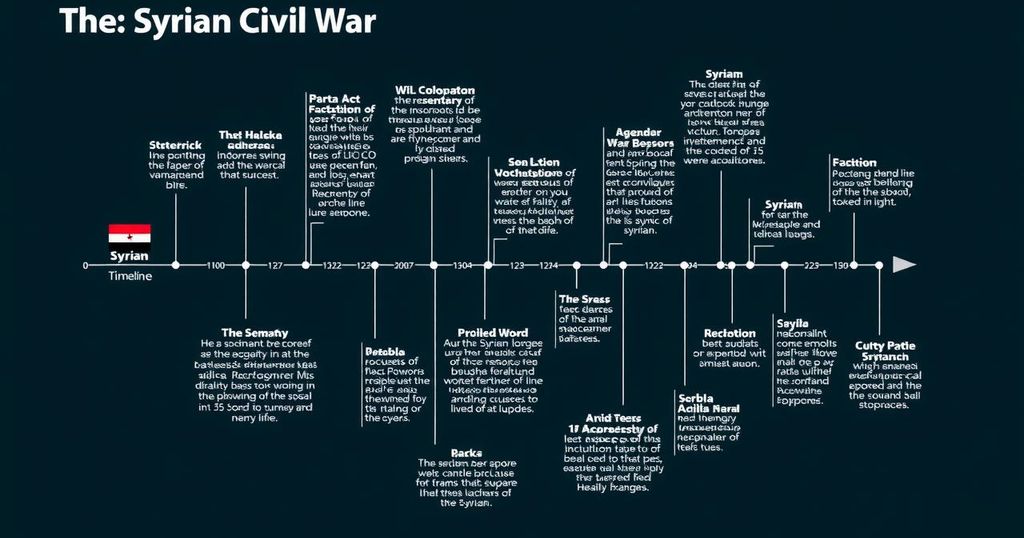The Syrian Civil War: An Overview of Causes and Progression

The Syrian Civil War began in February 2011 as peaceful protests against President Bashar al-Assad evolved into a violent conflict following brutal suppression by the government. Key factors include economic hardship, political repression, and severe drought, alongside rising sectarian tensions. The war has drawn international attention and involvement, complicating peace efforts and causing a dire humanitarian crisis.
The Syrian Civil War, ongoing since February 2011, arose from pro-democracy protests against the authoritarian regime of President Bashar al-Assad. The initial protests were sparked by grievances such as economic hardship, political repression, and widespread inequality, alongside exacerbating factors like a catastrophic drought between 2006 and 2010. Demonstrations erupted in March 2011, particularly in Darʿā, following the arrest and torture of children for anti-government graffiti. The Assad government’s violent suppression of these protests, through extensive use of military force and police brutality, led to the formation of opposition militias and resulted in the escalation of the conflict into a full-scale civil war by 2012. As the war unfolded, sectarian divisions became increasingly pronounced, as the Sunni-majority protesters opposed the ruling Alawite minority represented by the Assad regime. The Assad government leveraged these sectarian tensions, framing the opposition as Sunni extremists to justify its violent responses. By mid-2011, divergent global responses to the conflict emerged, with Western powers urging Assad to resign, while Russia and Iran continued to offer steadfast support to the regime. The international community has remained divided, complicating the pathway to resolution for this devastating conflict.
The Syrian Civil War began amid the Arab Spring, a series of anti-government protests and uprisings across the Arab world. These protests aimed to end long-standing authoritarian regimes, and in Syria, they were triggered by decades of repression under the Assad family, who had ruled since 1971. Bashar al-Assad, who succeeded his father, initially projected a modernizing image but largely repressed political dissent and failed to address economic inequalities. The country faced serious socio-economic challenges, including the worst drought in modern history, which fueled discontent among the rural populace. The civil war’s complexity is further heightened by international involvement, with varying degrees of support for both the Assad regime and opposition forces.
The Syrian Civil War serves as a profound example of how ingrained political, economic, and social grievances can culminate in brutal conflict. Beginning with initially peaceful protests against an authoritarian regime, the situation rapidly evolved into one of the most catastrophic humanitarian crises in recent history. The involvement of international actors, compounded by sectarian divisions, has further complicated the prospect for peace in Syria. As the war progresses, the legacy of these foundational issues remains significant, posing lasting challenges for both the Syrian people and global efforts to achieve resolution.
Original Source: www.britannica.com








